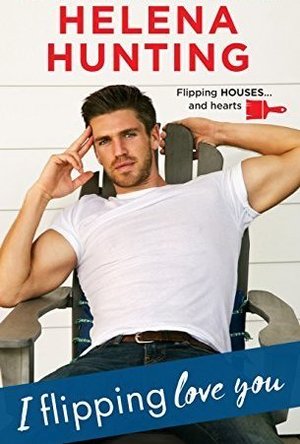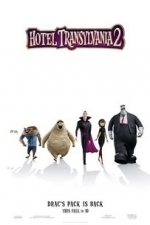Search
Search results
A Bibliophagist (113 KP) rated Wuthering Heights in Books
Feb 12, 2020
Stands up (2 more)
Enthralling
Unique
Dislikable characters (1 more)
Difficult accents without translations
I will do my best to review this, however, I didn't heed the intro, this tour de force really does leave you as quickly as it comes, and reading another book before reviewing this one was a mistake.
In reading reviews prior to reading this book, I learned three major things; 1, people either love or hate this book, 2. I had no idea what I was actually in for, and 3. this may have not been the romantic pick for February I was expecting it to be.
So yes, PSA for anyone out there considering going into this thinking it's a romance. It is NOT. There are love stories in this, absolutely, powerful love stories that made me read quotes to my boyfriend with snarky statements like "if you don't say this at my funeral, did you ever really love me?". But it is NOT a romance. If anything this has more in common with "The Count of Monte Cristo" than it does "Pride and Prejudice". Honestly, the only thing it has in common with other, romantic books of this time, is the time period. But beware, no balls and high society and Mr. Darcy's await you in this novel. I feel a number of the reviews decrying the book, calling the characters "monstrous" both were the orchestrators of their own disappointment by assuming it to be like an Austin, and really need to look in the mirror and reflect on if they are really as perfect as they think they are. Especially if they were in the circumstances that surround this tale.
I find that Heathcliff himself addresses this mistake many readers had going into this book.
"picturing in me a hero of romance, and expecting unlimited indulgences from my chivalrous devotion. I can hardly regard her in the light of a rational creature, so obstinately has she persisted in forming a fabulous notion of my character and actin gon false impressions she cherished."
SO many readers went into this expecting Heathcliff to be some misunderstood brute or one harsh but salvaged by the purity of his love of Catherine. But this isn't the case.
Wuthering Heights tells the story of (I guess technically 3) but really 2 generations of families. Living in the Yorkshire Moors, isolated from high society. We have the Liptons, primmer and properer and more in touch with society, and the Earnshaws which become a little rough around the edges in their isolation and loss. Papa Earnshaw has two children, Catherine and Hindley, and adopts a small boy of unknown heritage but is implied to be Romani or of mixed race (sorry Tom Hardy and nearly every portrayal of Heathcliff), that he names, simply, Heathcliff. He loves Heathcliff, and dotes on him greatly, much to the chagrin of Hindly who grows to resent Heathcliff, treating him terribly until Hindly leaves for school. Catherine and Heathcliff become great playmates, their care is given primarily to a maid scarcely older than them, as Papa Earnshaw is a single daddy. They are wild things, as children I would assume would be, in such isolation as the Yorkshire Moors in a time before the creature comforts and entertainment we have. They grow very close, obsessively close. Upon Papa Earnshaw's death, Hindley returns (at around the age of 23) to run the household, and take over the care of these two youngsters, one of which, he hates. So, Cinderella-style, Heathcliff gets treated worse and worse and treated like a servant rather than the adoptive child that Papa Earnshaw loved so dearly. Suddenly Heathcliff is nothing, treated terribly, and has the most important thing in his life banned from him, Catherine. Meanwhile, the Liptons also have two children, not wild, but spoilt in their own ways, Edgar and Isabella, close in age to Heathcliff and Catherine. When H and C run off on a camping adventure and find themselves at the Lipton's house, Catherine is injured and stays with the Liptons, in their higher society for 5 weeks. Leaving Heathcliff to the abuse of her brother and further isolation. She returns much more a lady and with her connection to Heathcliff slightly burned. In an attempt to protect Heathcliff, and because Heathcliff is now no more than a servant and not an option to marry, Catherine intends to marry Edgar. Causing our resident bad boy to run off for a number of years. Only to return a proper, but still broody gentleman, and confuse Catherine's affection much to the displeasure of Edgar.
Now, this is where a number of shows and movies end things. With a focus on Catherine and Heathcliff's whirlwind romance, obsession. It has some of the most to the point and beautiful lines regarding love, not all flowery, not "I love you most ardently" but rather cries of "I am Heathcliff" by Catherine. Absolutely heart-rending, even though I didn't like Catherine. But this is not where the book ends. The book goes on to follow Heathcliff's obsession with revenge, with his treatment as a child, his rage against Hindley, and against losing Catherine to Edgar. He spends years slowly ruining everyone's lives. Not that you could really ruin Hindley's life, he was a mean drunk. But he even goes as far as to meddle with the next generation, Hindley's son Hareton is raised terribly and is a bit of a wild thing (those his redemption and love story is quite beautiful), Catherine's daughter Cathy and Heathcliff's son Lipton are whisked up into a big scheme by Heathcliff to take everything. Heathcliff even marry's out of pure spite.
Love does not redeem this man, he's barely an antihero without his youth story. He is angry and passionate and obsessed. Which for the first half of the book I didn't fault him for, but he does do some damnable things in the second half that you cannot argue away. No matter how romantic and beautiful and heartrending his lamentations can be. I was quite the character arc, quite the tale of revenge and loss. He was unredeemable because of his big sprawling schemes and harsh intentions. Catherine for me was unredeemable because she was an obnoxious, selfish thing, that honestly if Heathcliff had stopped thinking about two minutes would have found a better woman in every town. She whined and treated Edgar (who was honestly super sweet) so terribly, she had an anger problem and would work herself up until she was sick. But it is in this imperfection that I fell in love more with the book. Here is something unique and real, this is no Elizabeth Bennett. The isolation and hermetic lifestyle created very different characters than what we see in Jane Austin or even in Emily's sister's novel.
It's no wonder this book was harshly critiqued upon release, here is a woman, writing a revenge story, with love stories in it. That based on the biographical intro had some parallels to her own life. She lived an isolated existence, surrounded by the death of the majority of her family young. She was in her late 20s when she wrote this and died a year after publication. She made humans of monsters and monsters of humans and wrote something unexpected and truly unique.
It's hard for me to explain, amongst the harshness and bleakness of this novel, why I loved it so much. But I did, I loved every bit. The anger, the passion, the love, the scheming, I loved it all.
I also feel it's important to note that this whole story is told by a maid to a new tenant. So the narrator is unreliable. Were these people truly this way? Or is it clouded by this maid's opinions of them? How much is omitted due to the maid not being privy to an event?
Truly a fantastic read, that punched me in my chest and gut, grabbed and twisted my insides and refuses to let go. I would argue it's a cult classic rather than a classic. So please, shed all preconceived notions of what this book is, shake that Austin out of your mind and read this tale of obsession and revenge. It's well worth it.
In reading reviews prior to reading this book, I learned three major things; 1, people either love or hate this book, 2. I had no idea what I was actually in for, and 3. this may have not been the romantic pick for February I was expecting it to be.
So yes, PSA for anyone out there considering going into this thinking it's a romance. It is NOT. There are love stories in this, absolutely, powerful love stories that made me read quotes to my boyfriend with snarky statements like "if you don't say this at my funeral, did you ever really love me?". But it is NOT a romance. If anything this has more in common with "The Count of Monte Cristo" than it does "Pride and Prejudice". Honestly, the only thing it has in common with other, romantic books of this time, is the time period. But beware, no balls and high society and Mr. Darcy's await you in this novel. I feel a number of the reviews decrying the book, calling the characters "monstrous" both were the orchestrators of their own disappointment by assuming it to be like an Austin, and really need to look in the mirror and reflect on if they are really as perfect as they think they are. Especially if they were in the circumstances that surround this tale.
I find that Heathcliff himself addresses this mistake many readers had going into this book.
"picturing in me a hero of romance, and expecting unlimited indulgences from my chivalrous devotion. I can hardly regard her in the light of a rational creature, so obstinately has she persisted in forming a fabulous notion of my character and actin gon false impressions she cherished."
SO many readers went into this expecting Heathcliff to be some misunderstood brute or one harsh but salvaged by the purity of his love of Catherine. But this isn't the case.
Wuthering Heights tells the story of (I guess technically 3) but really 2 generations of families. Living in the Yorkshire Moors, isolated from high society. We have the Liptons, primmer and properer and more in touch with society, and the Earnshaws which become a little rough around the edges in their isolation and loss. Papa Earnshaw has two children, Catherine and Hindley, and adopts a small boy of unknown heritage but is implied to be Romani or of mixed race (sorry Tom Hardy and nearly every portrayal of Heathcliff), that he names, simply, Heathcliff. He loves Heathcliff, and dotes on him greatly, much to the chagrin of Hindly who grows to resent Heathcliff, treating him terribly until Hindly leaves for school. Catherine and Heathcliff become great playmates, their care is given primarily to a maid scarcely older than them, as Papa Earnshaw is a single daddy. They are wild things, as children I would assume would be, in such isolation as the Yorkshire Moors in a time before the creature comforts and entertainment we have. They grow very close, obsessively close. Upon Papa Earnshaw's death, Hindley returns (at around the age of 23) to run the household, and take over the care of these two youngsters, one of which, he hates. So, Cinderella-style, Heathcliff gets treated worse and worse and treated like a servant rather than the adoptive child that Papa Earnshaw loved so dearly. Suddenly Heathcliff is nothing, treated terribly, and has the most important thing in his life banned from him, Catherine. Meanwhile, the Liptons also have two children, not wild, but spoilt in their own ways, Edgar and Isabella, close in age to Heathcliff and Catherine. When H and C run off on a camping adventure and find themselves at the Lipton's house, Catherine is injured and stays with the Liptons, in their higher society for 5 weeks. Leaving Heathcliff to the abuse of her brother and further isolation. She returns much more a lady and with her connection to Heathcliff slightly burned. In an attempt to protect Heathcliff, and because Heathcliff is now no more than a servant and not an option to marry, Catherine intends to marry Edgar. Causing our resident bad boy to run off for a number of years. Only to return a proper, but still broody gentleman, and confuse Catherine's affection much to the displeasure of Edgar.
Now, this is where a number of shows and movies end things. With a focus on Catherine and Heathcliff's whirlwind romance, obsession. It has some of the most to the point and beautiful lines regarding love, not all flowery, not "I love you most ardently" but rather cries of "I am Heathcliff" by Catherine. Absolutely heart-rending, even though I didn't like Catherine. But this is not where the book ends. The book goes on to follow Heathcliff's obsession with revenge, with his treatment as a child, his rage against Hindley, and against losing Catherine to Edgar. He spends years slowly ruining everyone's lives. Not that you could really ruin Hindley's life, he was a mean drunk. But he even goes as far as to meddle with the next generation, Hindley's son Hareton is raised terribly and is a bit of a wild thing (those his redemption and love story is quite beautiful), Catherine's daughter Cathy and Heathcliff's son Lipton are whisked up into a big scheme by Heathcliff to take everything. Heathcliff even marry's out of pure spite.
Love does not redeem this man, he's barely an antihero without his youth story. He is angry and passionate and obsessed. Which for the first half of the book I didn't fault him for, but he does do some damnable things in the second half that you cannot argue away. No matter how romantic and beautiful and heartrending his lamentations can be. I was quite the character arc, quite the tale of revenge and loss. He was unredeemable because of his big sprawling schemes and harsh intentions. Catherine for me was unredeemable because she was an obnoxious, selfish thing, that honestly if Heathcliff had stopped thinking about two minutes would have found a better woman in every town. She whined and treated Edgar (who was honestly super sweet) so terribly, she had an anger problem and would work herself up until she was sick. But it is in this imperfection that I fell in love more with the book. Here is something unique and real, this is no Elizabeth Bennett. The isolation and hermetic lifestyle created very different characters than what we see in Jane Austin or even in Emily's sister's novel.
It's no wonder this book was harshly critiqued upon release, here is a woman, writing a revenge story, with love stories in it. That based on the biographical intro had some parallels to her own life. She lived an isolated existence, surrounded by the death of the majority of her family young. She was in her late 20s when she wrote this and died a year after publication. She made humans of monsters and monsters of humans and wrote something unexpected and truly unique.
It's hard for me to explain, amongst the harshness and bleakness of this novel, why I loved it so much. But I did, I loved every bit. The anger, the passion, the love, the scheming, I loved it all.
I also feel it's important to note that this whole story is told by a maid to a new tenant. So the narrator is unreliable. Were these people truly this way? Or is it clouded by this maid's opinions of them? How much is omitted due to the maid not being privy to an event?
Truly a fantastic read, that punched me in my chest and gut, grabbed and twisted my insides and refuses to let go. I would argue it's a cult classic rather than a classic. So please, shed all preconceived notions of what this book is, shake that Austin out of your mind and read this tale of obsession and revenge. It's well worth it.
Movie Metropolis (309 KP) rated Dunkirk (2017) in Movies
Jun 10, 2019
A Triumph
Brutal. Spectacular. Emotional. These are just some of the adjectives you could use to describe Christopher Nolan’s latest film, Dunkirk. The director of Inception, The Dark Knight, Memento and Interstellar is one of the greatest film-makers working today and he raises the bar once again with this bleak tale from World War II.
With war, you have to respect the past whilst allowing modern-day film-goers to truly understand the brutality that ordinary people like you and I went through on a daily basis.
In May 1940, Germany had advanced into France, trapping Allied troops on the beaches of Dunkirk. Under air and ground cover from British and French forces, troops were slowly and methodically evacuated from the beach using not only military ships but civilian boats too. At the end of this incredible story of courage, 330,000 French, British, Belgian and Dutch soldiers were safely evacuated.
I found a quote the other day that said “Christopher Nolan is like Michael Bay for people who have ever read a book” and in Dunkirk that seems more apt than ever. Of course there are explosions, many of them, but they are interweaved with some incredible storytelling.
Split into three separate timelines, Dunkirk follows fisherman Mark Rylance as he sails to the beaches as part of the civilian rescue effort. On land we shadow a group of young soldiers desperately trying to get back home. Finally, the film flies alongside Tom Hardy’s brave Spitfire pilot as he tries his best to keep the beaches safe.
Each of the stories has something to offer but Mark Rylance’s performance is definitely the best, making his timeline the most interesting and often the most emotional. Addressing the elephant in the room, Harry Styles, is probably best at this part of the review – he’s excellent and in a much larger part than I had imagined.
In fact, all the performances are excellent, helped in part by Christopher Nolan’s incredible use of close-ups. This is a living, breathing war and as the audience, you feel as claustrophobic as the 400,000 men did waiting on that beach in 1940.
Moreover, the sound is just astonishing. I have never known a film use sound to such an extent to convey sheer terror. The score by Hans Zimmer, coupled with the deafening aircraft flying overhead and the rapid gunfire is incredibly harrowing and makes Dunkirk very hard to watch at times – despite its 12A certification.
Dunkirk is also a masterclass in practical effects. Nearly everything you see on screen was shot without the use of CGI and my goodness you can tell. We’re so used to seeing blockbusters filled to the brim with computer generated imagery that it’s easy to forget just how good practical effects can be.
Overall, Christopher Nolan has created a tasteful homage to a day that has been etched into the minds of generations of people. It would’ve been easy to create a film that focused on the action rather than the human details of this incredible story, but Nolan has managed to craft an absolute triumph. It’s one of the best films of the year and an absolute must-watch.
https://moviemetropolis.net/2017/07/23/dunkirk-review-a-triumph/
With war, you have to respect the past whilst allowing modern-day film-goers to truly understand the brutality that ordinary people like you and I went through on a daily basis.
In May 1940, Germany had advanced into France, trapping Allied troops on the beaches of Dunkirk. Under air and ground cover from British and French forces, troops were slowly and methodically evacuated from the beach using not only military ships but civilian boats too. At the end of this incredible story of courage, 330,000 French, British, Belgian and Dutch soldiers were safely evacuated.
I found a quote the other day that said “Christopher Nolan is like Michael Bay for people who have ever read a book” and in Dunkirk that seems more apt than ever. Of course there are explosions, many of them, but they are interweaved with some incredible storytelling.
Split into three separate timelines, Dunkirk follows fisherman Mark Rylance as he sails to the beaches as part of the civilian rescue effort. On land we shadow a group of young soldiers desperately trying to get back home. Finally, the film flies alongside Tom Hardy’s brave Spitfire pilot as he tries his best to keep the beaches safe.
Each of the stories has something to offer but Mark Rylance’s performance is definitely the best, making his timeline the most interesting and often the most emotional. Addressing the elephant in the room, Harry Styles, is probably best at this part of the review – he’s excellent and in a much larger part than I had imagined.
In fact, all the performances are excellent, helped in part by Christopher Nolan’s incredible use of close-ups. This is a living, breathing war and as the audience, you feel as claustrophobic as the 400,000 men did waiting on that beach in 1940.
Moreover, the sound is just astonishing. I have never known a film use sound to such an extent to convey sheer terror. The score by Hans Zimmer, coupled with the deafening aircraft flying overhead and the rapid gunfire is incredibly harrowing and makes Dunkirk very hard to watch at times – despite its 12A certification.
Dunkirk is also a masterclass in practical effects. Nearly everything you see on screen was shot without the use of CGI and my goodness you can tell. We’re so used to seeing blockbusters filled to the brim with computer generated imagery that it’s easy to forget just how good practical effects can be.
Overall, Christopher Nolan has created a tasteful homage to a day that has been etched into the minds of generations of people. It would’ve been easy to create a film that focused on the action rather than the human details of this incredible story, but Nolan has managed to craft an absolute triumph. It’s one of the best films of the year and an absolute must-watch.
https://moviemetropolis.net/2017/07/23/dunkirk-review-a-triumph/
Gareth von Kallenbach (980 KP) rated Titanfall - Expedition in Video Games
Jun 19, 2019
Fans of Titanfall can celebrate the release of three new maps in the brand-new Titanfall Expedition DLC. The collection retails for $9.99 but is available for $24.99 for those who wish to save some money and purchase all three of the planned content packs ahead of time at a reduced price.
While the collection does not offer anything new in terms of gameplay modes, weaponry, or significant upgrades, what it does offer is three new highly enjoyable and highly detailed maps which can be played in both attrition and variety pack modes.
Attrition is the classic Team Death Match where essentially if it moves, shoot it, while the variety pack is like having the game on iTunes shuffle as you could be playing Capture the Flag one moment and attrition the next.
Swamplands is the first pack that I played and this is an interesting mix of combat in the Temple as well as within a swamp as the name would suggest. With plenty of roots, trees, and various to hide it could be a sniper’s delight but for those stealthy enough to take advantage the cloaking abilities you can point your opponents and rack up some impressive streaks. I found that alternating between my Wingman side arm and machine gun work very well and I was not against using some up-close melee combat to finish enemies off.
For me setting my Titan in auto mode was the best option due to some tricky terrain that time could create bottlenecks and leave your Titan a sitting duck.
Wagames takes the best of Titanfall’s industrial maps and combines them into a combat simulator complete with holographic displays and environments. There were some Tron-esque elements to the landscaping and I love the elevated platforms it allowed me to take out enemies arriving via dropship below and pouncing down upon them and enemy Titans that passed by. With a nice mix of street combat as well as rooftop and building interiors this is ideal for run and gun gameplay enthusiasts such as myself.
Runoff is the final map and the least unique of the new offerings. That being said it is extremely well designed in that the feature of the map is that it is best suited for gamers who were on the move. Set in a water filtration plant, everything from Walks and towers, to ditches and drains make up this environment and the ability to leap from one environment into the water is very enjoyable.
There is a nice mix between close quarter and ranged combat and having a nice variety in your combat areas does allow for a welcome change of pace.
While none of the new maps are certain to be items that push you over the top if you’re already on the fence about purchasing the game, remember you are essentially paying $3.33 per map, less if you purchase a season pass. So in summary, while it is not necessary to have it certainly adds to the enjoyment level of the game in that you get three new diverse and enjoyable environments in which to test your skills at a very affordable price which makes it very easy for me to recommend.
The collection is available for the PC, Xbox One, and Xbox 360 versions of the game.
http://sknr.net/2014/06/02/titanfal-expedition/
While the collection does not offer anything new in terms of gameplay modes, weaponry, or significant upgrades, what it does offer is three new highly enjoyable and highly detailed maps which can be played in both attrition and variety pack modes.
Attrition is the classic Team Death Match where essentially if it moves, shoot it, while the variety pack is like having the game on iTunes shuffle as you could be playing Capture the Flag one moment and attrition the next.
Swamplands is the first pack that I played and this is an interesting mix of combat in the Temple as well as within a swamp as the name would suggest. With plenty of roots, trees, and various to hide it could be a sniper’s delight but for those stealthy enough to take advantage the cloaking abilities you can point your opponents and rack up some impressive streaks. I found that alternating between my Wingman side arm and machine gun work very well and I was not against using some up-close melee combat to finish enemies off.
For me setting my Titan in auto mode was the best option due to some tricky terrain that time could create bottlenecks and leave your Titan a sitting duck.
Wagames takes the best of Titanfall’s industrial maps and combines them into a combat simulator complete with holographic displays and environments. There were some Tron-esque elements to the landscaping and I love the elevated platforms it allowed me to take out enemies arriving via dropship below and pouncing down upon them and enemy Titans that passed by. With a nice mix of street combat as well as rooftop and building interiors this is ideal for run and gun gameplay enthusiasts such as myself.
Runoff is the final map and the least unique of the new offerings. That being said it is extremely well designed in that the feature of the map is that it is best suited for gamers who were on the move. Set in a water filtration plant, everything from Walks and towers, to ditches and drains make up this environment and the ability to leap from one environment into the water is very enjoyable.
There is a nice mix between close quarter and ranged combat and having a nice variety in your combat areas does allow for a welcome change of pace.
While none of the new maps are certain to be items that push you over the top if you’re already on the fence about purchasing the game, remember you are essentially paying $3.33 per map, less if you purchase a season pass. So in summary, while it is not necessary to have it certainly adds to the enjoyment level of the game in that you get three new diverse and enjoyable environments in which to test your skills at a very affordable price which makes it very easy for me to recommend.
The collection is available for the PC, Xbox One, and Xbox 360 versions of the game.
http://sknr.net/2014/06/02/titanfal-expedition/
Whatchareadin (174 KP) rated I Flipping Love You in Books
Apr 9, 2019
Rian has not had the easiest life so far. She and her twin sister, Marley are finally getting their lives where they want them. Their real estate business is going well and they will soon have the money they need to do their first flip. Along comes, Pierce, the dashing city boy who seems to be the perfect match. But when Pierce starts showing up everywhere Rian is to show or flip a house, she becomes suspicious of whether he is really interested in her or if he just wants an in on the properties on the beach in the Hamptons. Determined not to let her past ruin her future, Rian keeps forward with her quest despite Pierce's efforts to thwart her. Rian is not interested in men right now, her only objective is to be able to start flipping houses with her sister in an attempt to acquire the Mission Mansion which used to be in their family. Will she fall for this guy or leave him alone to continue with her own dreams?
Thank you to NetGalley and St. Martin's Press for the opportunity to read and review this book.
At first I wasn't sure how this book was going to turn out. I'm a big fan of HGTV and house flipping shows, but how would that translate into a romance novel. It's true that Rian has her share of demons in her closet, but her past shouldn't dictate her future, especially when it comes to love. I really enjoyed this book. It had me hooked from the start and I didn't want to put it down. There were times when I found the main character a little whinny, but we, as independent women, can get that way sometimes when things seem to be going our way and then an obstacle comes into play. A very handsome and determined obstacle at that.
This is a great story about family and overcoming your past to make room for love and happiness in your future.
Thank you to NetGalley and St. Martin's Press for the opportunity to read and review this book.
At first I wasn't sure how this book was going to turn out. I'm a big fan of HGTV and house flipping shows, but how would that translate into a romance novel. It's true that Rian has her share of demons in her closet, but her past shouldn't dictate her future, especially when it comes to love. I really enjoyed this book. It had me hooked from the start and I didn't want to put it down. There were times when I found the main character a little whinny, but we, as independent women, can get that way sometimes when things seem to be going our way and then an obstacle comes into play. A very handsome and determined obstacle at that.
This is a great story about family and overcoming your past to make room for love and happiness in your future.
Leanne Crabtree (480 KP) rated Hearts on Air (Hearts, #6) in Books
Jan 9, 2020
This review and more can be found at my blog https://aromancereadersreviews.blogspot.com/
This has been borrowed from the Kindle Unlimited library.
Well, first things first. You DO NOT have to read book #5.5, One Epic Night, to understand this as it is included at the beginning of this book.
Then the story continues where that one left off. Trevor is now a TV star in a free-running show that follows him and a handful of other free runners as they do stunts around London and other big cities. One difference now is that Reya is not in his life. Chapters go back and forth a few times so we see what happened in the months following their "one epic night" and how things didn't end so well with them.
It's been about 2 years since then and Trevor suddenly turns up in Reya's life again wanting to be friends again and asking if she'll fill in for one of their pregnant PA's while she's off on maternity. Reya is wary of letting Trev back into her life but eventually agrees and they travel to several cities around Europe with the group doing stunts and free running in pretty parks and some well known places. As they spend time together, they grow closer once more and before long those feelings from two years ago are creeping back in.
One thing that was driving me a little mad was the Leanne and Callum thing. I know they get their own book in a different series but seeing their love/hate relationship and the arguments and tender moments and NOT KNOWING what was happening was driving me a little mad. I will definitely be getting their book at some point.
I also liked how we saw pretty much every other character from the series in this one towards the end. I had honestly forgot how they all connected but seeing them in those last few chapters was really nice.
Definitely should be read if you've enjoyed previous books in the series.
This has been borrowed from the Kindle Unlimited library.
Well, first things first. You DO NOT have to read book #5.5, One Epic Night, to understand this as it is included at the beginning of this book.
Then the story continues where that one left off. Trevor is now a TV star in a free-running show that follows him and a handful of other free runners as they do stunts around London and other big cities. One difference now is that Reya is not in his life. Chapters go back and forth a few times so we see what happened in the months following their "one epic night" and how things didn't end so well with them.
It's been about 2 years since then and Trevor suddenly turns up in Reya's life again wanting to be friends again and asking if she'll fill in for one of their pregnant PA's while she's off on maternity. Reya is wary of letting Trev back into her life but eventually agrees and they travel to several cities around Europe with the group doing stunts and free running in pretty parks and some well known places. As they spend time together, they grow closer once more and before long those feelings from two years ago are creeping back in.
One thing that was driving me a little mad was the Leanne and Callum thing. I know they get their own book in a different series but seeing their love/hate relationship and the arguments and tender moments and NOT KNOWING what was happening was driving me a little mad. I will definitely be getting their book at some point.
I also liked how we saw pretty much every other character from the series in this one towards the end. I had honestly forgot how they all connected but seeing them in those last few chapters was really nice.
Definitely should be read if you've enjoyed previous books in the series.
Gareth von Kallenbach (980 KP) rated Hotel Transylvania 2 (2015) in Movies
Aug 6, 2019
Hotel Transylvania 2 is a new animated family film from Columbia Films, produced by Sony.
It has a huge voice cast, including stars Adam Sandler, Andy Samberg, Selena Gomez, Kevin James, Steve Buscemi, David Spade, Fran Dresher, Molly Shannon, Megan Mullally, Dana Carvey, Mel Brooks & Jon Lovitz.
This movie was super cute. The adult audience, myself included, laughed out loud, a lot. The kids thought it was hilarious, too.
One thing I liked a lot is that NOT all the good parts are in the commercials and previews, which means there is still “movie left to see” when you get to actually see the film, which is frequently not the case with highly advertised films.
The movie picks up where the first one left off, showing the wedding of Drac’s daughter Mavis to human Jonathan, and quickly jumping from there to the birth of a child (a son! (Named Dennis)) and then to the boys fourth birthday.
When Dennis doesn’t show any signs of his vamp heritage, Drac feels he must step in and try to help the boy “find his fangs”. Jonathan’s parents are none too thrilled with this turn of events and protest in words and actions.
The overall tone of the movie is happy, and teaches a lesson of acceptance.
The chemistry that showed up in the first film, is back in force between Dracula and his hotel buddies, and causes the movie to flow along without any major hiccups.
The jokes are cute, and play to both the kids and to adult humor.
There wasn’t anything that I found to be so inappropriate that it made my grind my teeth, which was a nice change in a children’s film.
If I had to make a complaint, it would honestly be that the movie seemed to almost move TOO quickly and I could have sat through another 20 minutes at least. Even though it’s run time is 90 minutes, it doesn’t “feel like” it lasts that long, and even my 7 year old son said it was ‘a quick movie’.
It has a huge voice cast, including stars Adam Sandler, Andy Samberg, Selena Gomez, Kevin James, Steve Buscemi, David Spade, Fran Dresher, Molly Shannon, Megan Mullally, Dana Carvey, Mel Brooks & Jon Lovitz.
This movie was super cute. The adult audience, myself included, laughed out loud, a lot. The kids thought it was hilarious, too.
One thing I liked a lot is that NOT all the good parts are in the commercials and previews, which means there is still “movie left to see” when you get to actually see the film, which is frequently not the case with highly advertised films.
The movie picks up where the first one left off, showing the wedding of Drac’s daughter Mavis to human Jonathan, and quickly jumping from there to the birth of a child (a son! (Named Dennis)) and then to the boys fourth birthday.
When Dennis doesn’t show any signs of his vamp heritage, Drac feels he must step in and try to help the boy “find his fangs”. Jonathan’s parents are none too thrilled with this turn of events and protest in words and actions.
The overall tone of the movie is happy, and teaches a lesson of acceptance.
The chemistry that showed up in the first film, is back in force between Dracula and his hotel buddies, and causes the movie to flow along without any major hiccups.
The jokes are cute, and play to both the kids and to adult humor.
There wasn’t anything that I found to be so inappropriate that it made my grind my teeth, which was a nice change in a children’s film.
If I had to make a complaint, it would honestly be that the movie seemed to almost move TOO quickly and I could have sat through another 20 minutes at least. Even though it’s run time is 90 minutes, it doesn’t “feel like” it lasts that long, and even my 7 year old son said it was ‘a quick movie’.
Gareth von Kallenbach (980 KP) rated Lucy (2014) in Movies
Aug 6, 2019
Luc Besson’s latest film will leave you impressed, and possibly a little confused.
Lucy, starring Scarlett Johansson and Morgan Freeman, comes out this Friday and is Besson’s (Fifth Element, The Professional) most recent stab at something a little bit different.
The film opens with Johansson’s character, Lucy, having an argument with her boyfriend about dropping off a case with unknown contents. After a lot of arguing (and having it handcuffed to her), Lucy is forced into going inside to make the delivery.
As she does, the director takes us on an interesting visual representation of her feelings using scenes similar to what most people recognize from National Geographic, complete with a cheetah hunting a gazelle. The scenes are punctuated by her cheetah-print jacket.
As the story continues, an Asian drug lord uses her as a mule for the substance inside the case. The bag breaks and the chemical starts changing Lucy, evolving her into something… different.
It’s been a long time since I’ve seen cinematography of this unique nature, where scenes were spliced in to express the character’s feelings. It’s unusual for a serious film (but still often done in a humorous way). Besson has done a masterful job of integrating serious moments, compelling action, and humor in a Fifth-Element-style to make a fluid, dynamic film. That said, it can feel slightly awkward at times.
I found myself laughing at the humor and engaged by the action, but most of all I was confused as to what I was watching.
This film seems very much akin to an episode of Cosmos. It’s interlaced with a story and some action, but purposefully meant to make a statement about human evolution.
Overall, I’d say this is a film well worth seeing. The acting was great, the cinematography was fantastic, and the direction was beautifully done. The main reason I feel it’s worth spending your money to see on the big screen is because of the gorgeous special effects, which were integrated in a captivating manner.
Lucy, starring Scarlett Johansson and Morgan Freeman, comes out this Friday and is Besson’s (Fifth Element, The Professional) most recent stab at something a little bit different.
The film opens with Johansson’s character, Lucy, having an argument with her boyfriend about dropping off a case with unknown contents. After a lot of arguing (and having it handcuffed to her), Lucy is forced into going inside to make the delivery.
As she does, the director takes us on an interesting visual representation of her feelings using scenes similar to what most people recognize from National Geographic, complete with a cheetah hunting a gazelle. The scenes are punctuated by her cheetah-print jacket.
As the story continues, an Asian drug lord uses her as a mule for the substance inside the case. The bag breaks and the chemical starts changing Lucy, evolving her into something… different.
It’s been a long time since I’ve seen cinematography of this unique nature, where scenes were spliced in to express the character’s feelings. It’s unusual for a serious film (but still often done in a humorous way). Besson has done a masterful job of integrating serious moments, compelling action, and humor in a Fifth-Element-style to make a fluid, dynamic film. That said, it can feel slightly awkward at times.
I found myself laughing at the humor and engaged by the action, but most of all I was confused as to what I was watching.
This film seems very much akin to an episode of Cosmos. It’s interlaced with a story and some action, but purposefully meant to make a statement about human evolution.
Overall, I’d say this is a film well worth seeing. The acting was great, the cinematography was fantastic, and the direction was beautifully done. The main reason I feel it’s worth spending your money to see on the big screen is because of the gorgeous special effects, which were integrated in a captivating manner.

Lola's ABC Party FREE - Learn to Read
Education and Games
App
Lola’s ABC Party FREE teaches letters for children ages 3-6. This free version of Lola's ABC Party...
LeftSideCut (3776 KP) rated Shang-Chi and the Legend of the Ten Rings (2021) in Movies
Sep 5, 2021 (Updated Oct 2, 2021)
The latest entry into the MCU is a definitely a ride, both in terms of quality and in what unfolds on screen. The things I disliked about Shang-Chi are very clear cut - it's pacing is all over the place, there's an unholy amount of exposition dumps, and the humourous moments didn't always land. I have nothing against Awkwafina, but her character here is a constant quip-machine, and takes up a hefty amount of screen time, whilst simultaneously feeling a little pointless when all is said and done.
However, the things I did like about Shang-Chi are also extremely clear cut. For a starter, I'm just generally stoked that the character himself has his own movie. We've come a long way since X-Men blew the superhero genre wide open back in 2000.
It has a great cast, including lead Simu Liu, as well as the likes of Tony Leung and Michelle Yeoh. The inner comic book nerd in me was beyond excited to see minor villains such as Razor Fist and Death Dealer on screen, and then of course (no spoilers!) a third act villain that is a true deep cut from the comics. Tony Leung's Wenwu aka The Mandarin strikes an imposing presence as the main big bad, and the subsequent theme of power and family gives the movie a beating, if tragic, heart.
Pretty much all of the fight scenes are great, and any flaws that I found were completely obliterated by the batshit insane final third, that honestly verges on live action anime at times.
The general tone of this movie feels like something new for the MCU. From street level fighting, to crazy fantasy style set pieces, to the exploration of Asian culture, Shang-Chi is a fresh new entry for the MCU, as the studio steps a little further out of its comfort zone. Please try to see it on the big screen if you can!
However, the things I did like about Shang-Chi are also extremely clear cut. For a starter, I'm just generally stoked that the character himself has his own movie. We've come a long way since X-Men blew the superhero genre wide open back in 2000.
It has a great cast, including lead Simu Liu, as well as the likes of Tony Leung and Michelle Yeoh. The inner comic book nerd in me was beyond excited to see minor villains such as Razor Fist and Death Dealer on screen, and then of course (no spoilers!) a third act villain that is a true deep cut from the comics. Tony Leung's Wenwu aka The Mandarin strikes an imposing presence as the main big bad, and the subsequent theme of power and family gives the movie a beating, if tragic, heart.
Pretty much all of the fight scenes are great, and any flaws that I found were completely obliterated by the batshit insane final third, that honestly verges on live action anime at times.
The general tone of this movie feels like something new for the MCU. From street level fighting, to crazy fantasy style set pieces, to the exploration of Asian culture, Shang-Chi is a fresh new entry for the MCU, as the studio steps a little further out of its comfort zone. Please try to see it on the big screen if you can!
Merissa (13619 KP) rated Zall's Captain (Planetary Submissives #3) in Books
May 8, 2023
This is the third and, so far, final book in the Planetary Submissives series and speaking of the series as a whole, I have loved how each story has gone. With only a touch or hint of BDSM and a storyline designed to tease and titillate whilst giving the reader the HEA, these books have been wonderful. Perfect for those coffee breaks when you want something steamy to read without being the equivalent of War & Peace.
In this story, we meet again with Zall, who is still on the ship that Chalice put him on. He has found his own niche amongst the crew - sort of - but wishes he had something more. Everyone just sort of puts up with him because of his connection to the Emperor. When the new Captain arrives on the ship, the lust is instantaneous but Zall is determined to never put himself in the thrall of anyone else again. Mixed in with this is a smuggling plot, abduction and attempted murder. Will Danner and Zall be able to come to a mutually agreeable arrangement and stay alive long enough to enjoy it?
Full of fun, frolics and yearning, this was a wonderful read from the start. Zall makes an observation about Prince Chalice that runs true for the series - the Pet may be the one wearing the collar, but he is also the one holding the leash. It doesn't matter who is called what, if the role they have is changeable or fixed, so long as the couple is happy and content with that, that's good enough for me.
Whilst these books may not be suited to everyone as they are not 'hardcore', I have personally loved each and every one and would love to read more in this series. Definitely recommended.
* A copy of this book was provided to me with no requirements for a review. I voluntarily read this book; the comments here are my honest opinion. *
Merissa
Archaeolibrarian - I Dig Good Books!
Dec 17, 2015
In this story, we meet again with Zall, who is still on the ship that Chalice put him on. He has found his own niche amongst the crew - sort of - but wishes he had something more. Everyone just sort of puts up with him because of his connection to the Emperor. When the new Captain arrives on the ship, the lust is instantaneous but Zall is determined to never put himself in the thrall of anyone else again. Mixed in with this is a smuggling plot, abduction and attempted murder. Will Danner and Zall be able to come to a mutually agreeable arrangement and stay alive long enough to enjoy it?
Full of fun, frolics and yearning, this was a wonderful read from the start. Zall makes an observation about Prince Chalice that runs true for the series - the Pet may be the one wearing the collar, but he is also the one holding the leash. It doesn't matter who is called what, if the role they have is changeable or fixed, so long as the couple is happy and content with that, that's good enough for me.
Whilst these books may not be suited to everyone as they are not 'hardcore', I have personally loved each and every one and would love to read more in this series. Definitely recommended.
* A copy of this book was provided to me with no requirements for a review. I voluntarily read this book; the comments here are my honest opinion. *
Merissa
Archaeolibrarian - I Dig Good Books!
Dec 17, 2015








